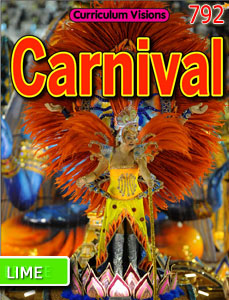Rio de Janeiro was founded on 1 March 1565, and the Rio area is now home to about 12 million people.
Rio de Janeiro means River of January in Portuguese, the language of Brazil. Rio is second to Sao Paolo in terms of population and the sixth largest city in the whole of the Americas.
Rio de Janeiro is very popular with tourists because of its fine beaches, tropical climate and dramatic scenery. It is also home to one of the world’s most famous carnivals. Its most famous feature is the granite dome called Sugarloaf Mountain.
Rio has a tropical climate with a time of heavy rains that resemble the monsoon. Long periods of heavy rain fall in summer – that is from December to March. Flooding and landslides are common on the steep slopes and along the rivers. In the summer it is very hot and humid, with temperatures above 40°C (104°F) and temperatures above 27°C (81°F) occurring in most months of the year. The Rio phrase, fazer frio ("the weather is getting cold"), means that temperatures are forecast to go below 21°C (70°F)! A coastal breeze makes this climate more bearable, and so the most expensive houses are close to the shore. The sea is also very warm, commonly 23–24°C (73–75°F) which is what makes bathing so enjoyable.
In winter (June to August), weather fronts come up from the Antarctic and make the weather changeable.
The wealthiest part of Rio is called the South Zone (Zona Sul). This contains Rio's famous Atlantic beach coastline with Copacabana Beach. This is the area most people think of when they think of Rio. On New Year's Eve, more than two million people go onto Copacabana Beach to watch the fireworks display. In this area is the famous Sugarloaf Mountain, with its two-stage cable car.
Rio de Janeiro is considered the largest "Portuguese city" outside Portugal.
Rio de Janeiro receives more visitors per year of any city in South America.
Carnival (Carnaval), is part of the Roman Catholic tradition just before Lent. Carnaval parades began as a festival for the wealthy during colonial times. However, by the start of the 20th century, decorated floats and African-Brazilian drums and music became dominant. So important has Carnaval become that there are schools for it, known as samba schools. There is not a single carnival in Rio, but a multitude of different events in different parts of the city.






